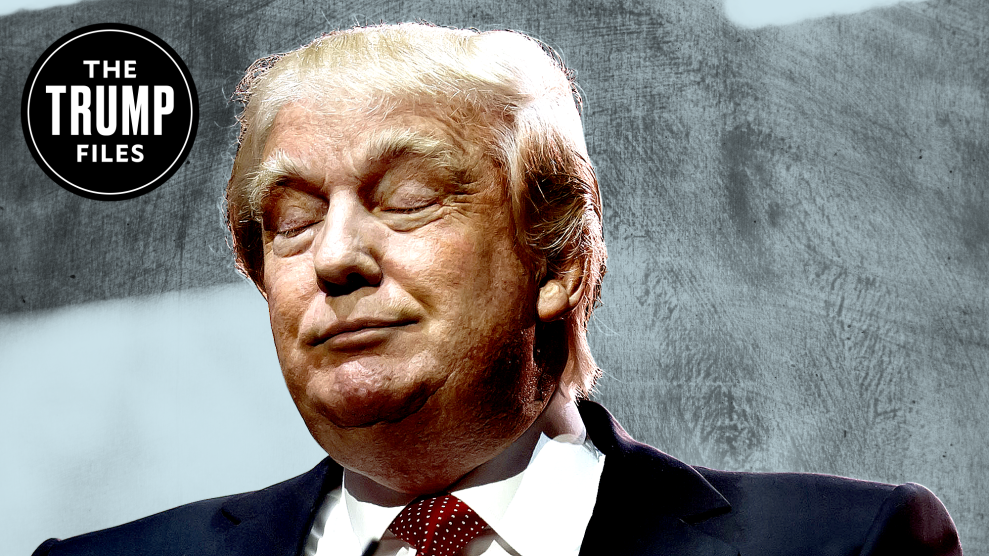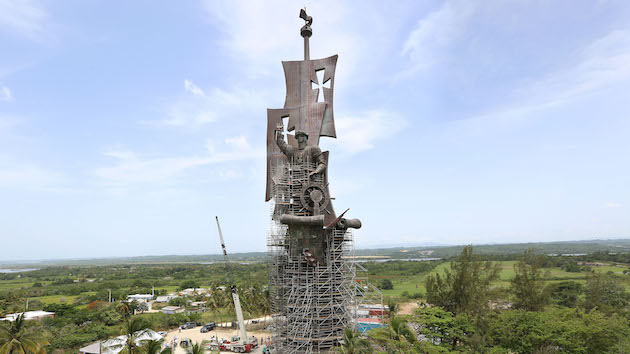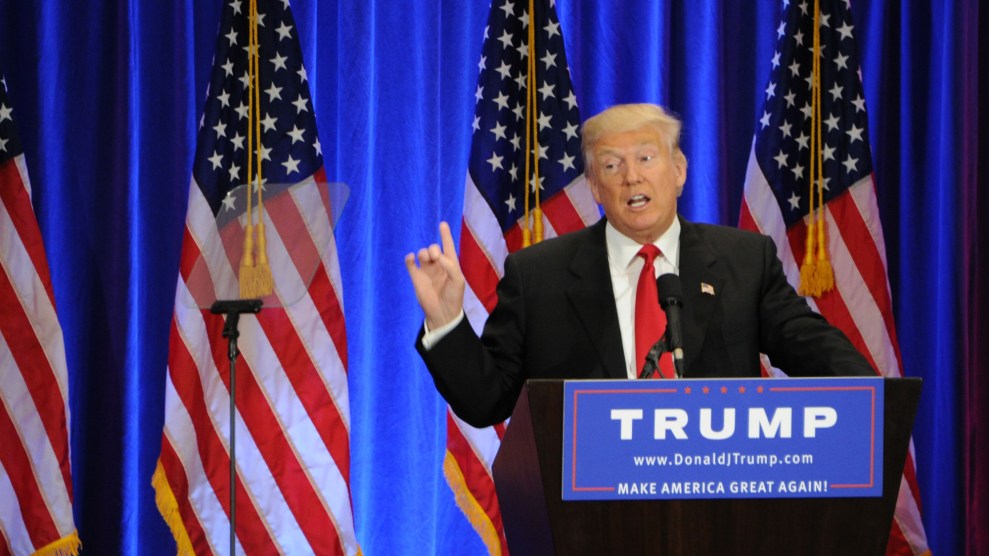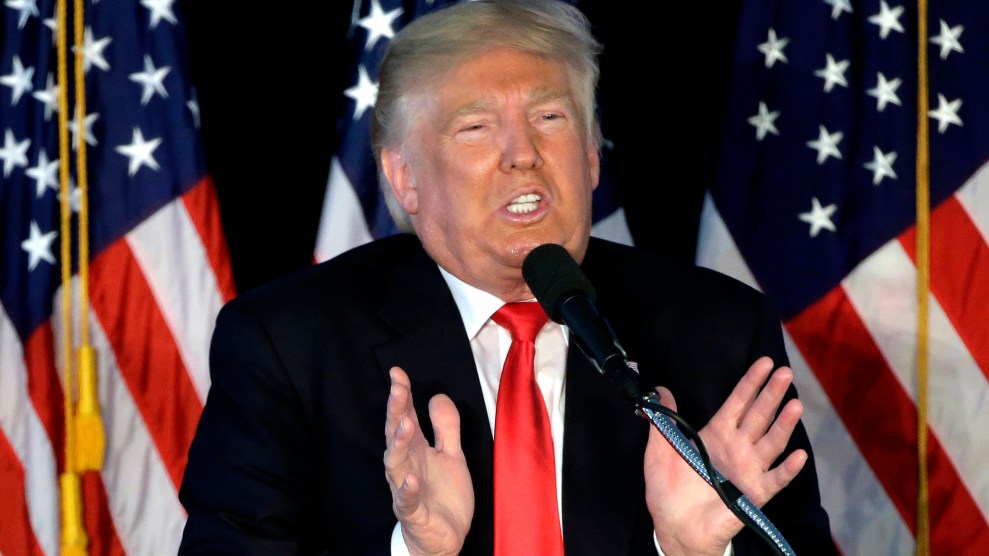
Mother Jones illustration; Shutterstock
When Donald Trump bought the development rights to a big chunk of Manhattan’s West Side in 1985, his original plan was characteristically huge. The proposed development included thousands of apartments, a giant new headquarters for NBC, and what would have been the world’s tallest building, a skyscraper that the New Yorker’s Mark Singer described as “an exotically banal hundred-and-fifty-story phallus.”
None of that came to pass. Trump couldn’t get the city to back his plans—or give him the enormous tax breaks he wanted—and investors from Hong Kong eventually took over the site and made plans to build some less-Trumpian condo buildings there. But Trump, who was still a minor partner in the development, wasn’t done proposing over-the-top plans. In 1997, the year construction on the site got underway, he floated the idea of putting an enormous bronze statue of Christopher Columbus—”six feet taller than the Statue of Liberty,” the Guardian reported—by Russian artist Zurab Tsereteli on “his” turf.
“It’s got forty million dollars worth of bronze in it, and Zurab would like it to be at my West Side Yards development,” he told Singer at the time. “The mayor of Moscow has written a letter to Rudy Giuliani stating that they would like to make a gift of this great work.”
This latest plan didn’t work, either, and that’s probably for the best. Tsereteli had already erected another giant statue that year, building a huge monument to Peter the Great in Moscow that was so hideous that people reportedly tried to blow it up. The Columbus statue, which Tsereteli eventually built, was also notoriously ugly. The Baltimore Sun nicknamed it “From Russia With Ugh” when some local businessman tried to plant the statue there. But Baltimore, along with New York, Columbus, Ohio, and Miami, all rejected it. It wasn’t until this month, after almost 20 years of homelessness, that the statue found a taker in Puerto Rico.













